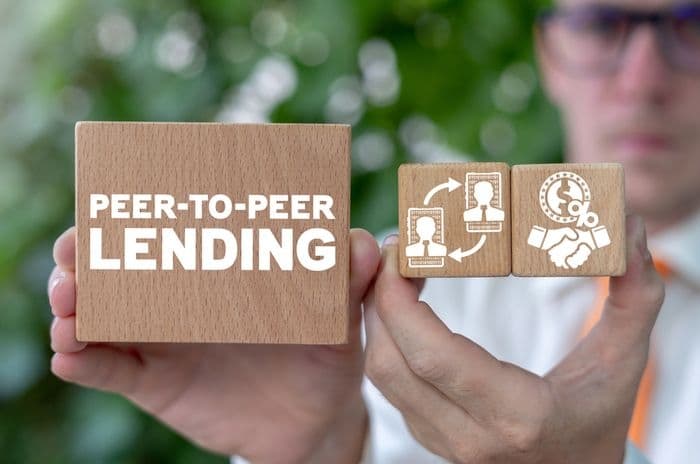Home > Money > News > Do peer-to-peer lenders encourage us to take risks?
Do peer-to-peer lenders encourage us to take risks?
INVESTING with online peer-to-peer lenders like Zopa, Lending Circle and Yes Secure comes with some risks.

And, according to a study released last year, getting involved with online communities makes consumers more likely to take those risks - and to continue making more daring financial decisions.
Online increases the risk factor
US, Canadian and Swiss researchers writing in the Journal of Marketing Research (abstract here) found that those who actively participate in forums, online bulletin boards and other communities were more likely to make riskier financial decisions - such as lending money to borrowers with greater chances of defaulting on their loans.
Not only were participants in online communities more likely to lend their own money to riskier borrowers, compared with non participants, the likelihood of risk seeking increased in proportion to the amount of participation.
That is, the more time people spent with taking part in discussions, the more likely they were to take risks.
Sense of security
The reason for this behaviour, one of the authors surmises, is that people assume that the communities care for their members.
Utpal M. Dholakia from Rice University's Graduate School of Business, who you can see below, says that participants, "come to believe that their fellow community members will come to their aid when something goes wrong but, in reality, they are out there on their own and could suffer adverse consequences."
As the study acknowledges, it's difficult to measure a sense of security and involvement.
Those that barely, or never, post on a forum may still feel that it validates their decisions and thus the influence of a community is greater than the number of active members it has.
The researchers also noted that the focus of discussion mattered.
When communities became more social than focused on financial discussions, the risk effect was lessened.
Just selection bias?
The results of this study are particularly interesting because of the care researchers took to account for selection bias.
If risk-takers are more likely to participate in forum discussions - to gain validation for their decisions, for example - then the findings are merely correlation, not causation.
In the Prosper.com study, the researchers corrected for the bias by comparing the participants' prior investment behaviour to their behaviour after getting involved in an online forum.
In another longitudinal study of Ebay users, participants in the 'community' condition were encouraged to join by the researchers, thus maintaining a more even spread of participant types.
What it means for the UK
Though the researchers principally examined the American peer-to-peer lending site, Prosper.com, the results have consequences for those who use UK based sites such as Zopa, Yes Secure, ThinCats and RateSetter.
Peer-to-peer lending has rapidly grown in popularity since Zopa paved the way with its pioneering site back in 2005.
Since then Zopa has lent more than £200m, while competitors such as Funding Circle and RateSetter have lent £34m and £24m respectively.
The numbers of people using social lending sites look set to continue their rise, with many commentators predicting that the sites will become a serious threat for banks.
In March, for example, Andy Haldane, a director of the Bank of England, suggested that these online alternatives would eventually replace High Street banks.
"There is no reason why end-savers and end-investors cannot connect directly. The banking middle men may in time become the surplus links in the chain," he said.
Risks to watch
Despite the many benefits of the peer-to-peer lending sector, however, there are some risks.
One is that lenders are not guaranteed to get their money back because peer-to-peer lending does not qualify for protection from the Financial Services Compensation Scheme (FSCS), which provides normal banks with security of up to £85,000 per saver.
We've looked into other risks in more detail here.
Nevertheless, the level of default on social lending loans is so far low, with lenders having lost an average of just 0.5% of their money.
Credit checks and a system of splitting loans between multiple borrowers help reduce the risk of payment default.
Already, however, we've seen sites whose protective measures have failed.
In 2011 the small social lender, Quakle, went bust after it allowed borrowers to personalise their requests for money - playing on lenders' willingness to help.
The policy backfired, with borrowers able to lend money that they were subsequently unable to repay.
It's normally something of a given that finance should be devoid of emotion and certainly a lesson the social lending sector has learnt; the big sites took care to separate the two before and they're really stringent now.
Beyond peer-to-peer
Peer-to-peer lending might be the most obvious example of a true online community focused on money but there are now more opportunities than ever for people to talk about money online.
We now spend a good proportion of our time using online banking services and many financial providers are keen to foster community support for customers.
That a study has found that lender's decisions may be influenced for the worse by the imagined support of an online community is something that needs to be addressed if the so-called 'new age' of finance is to succeed.
Get insider tips and the latest offers in our newsletter
Get insider tips and the latest offers in our newsletter

We are independent of all of the products and services we compare.

We order our comparison tables by price or feature and never by referral revenue.

We donate at least 5% of our profits to charity, and we aim to be climate positive.
Latest News

26 October 2022
Cost of living showing worrying trends in affordability
16 June 2022
FCA warn lenders on cost of living difficulties


